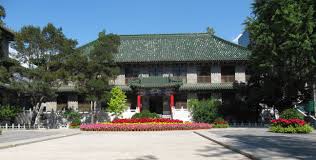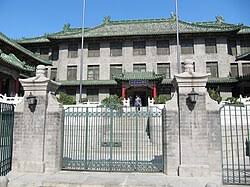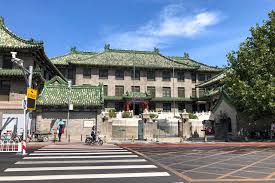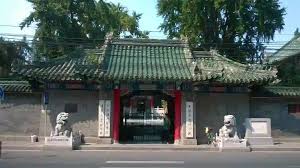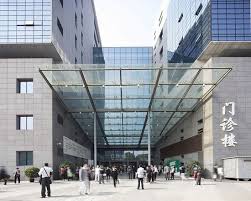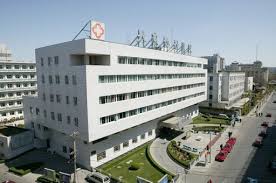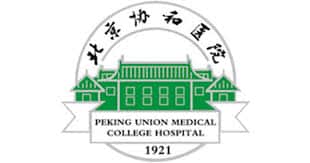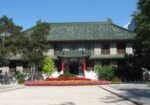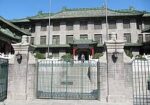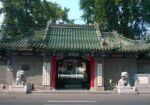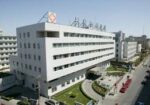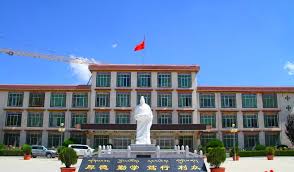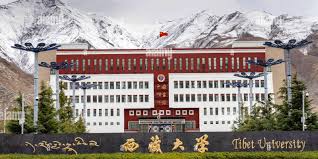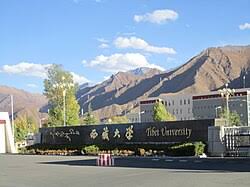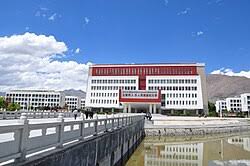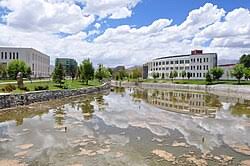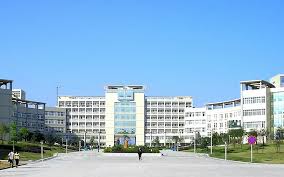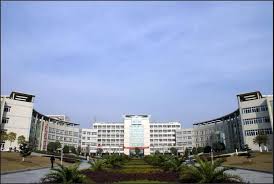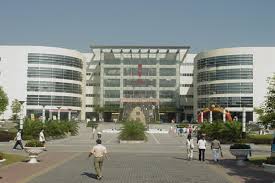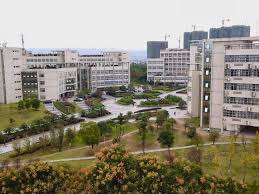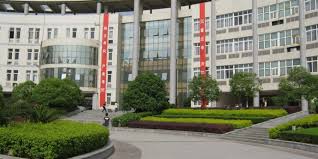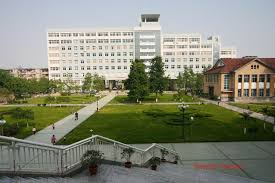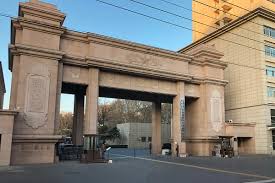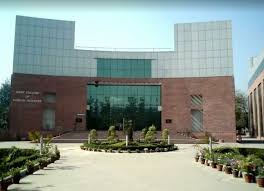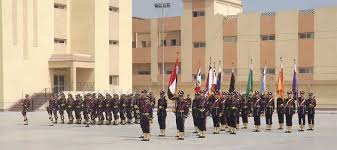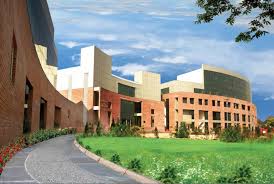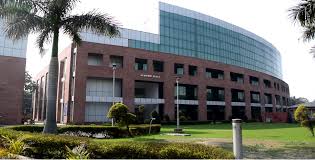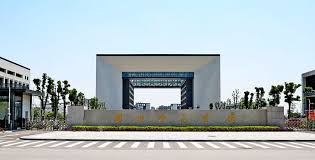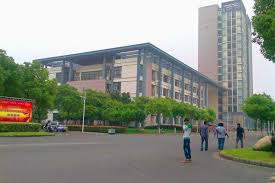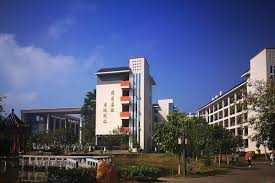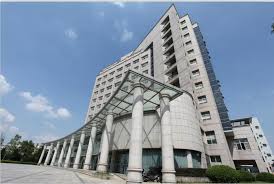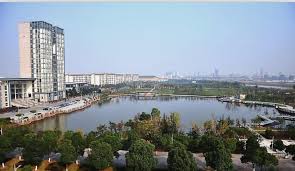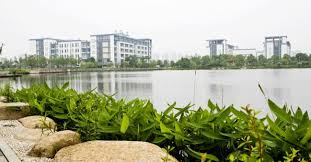The Peking Union Medical College Hospital (PUMCH) was founded in 1921 by the Rockefeller Foundation, with the ambitious goal of being the “best medical center in Asia.” Since its founding, PUMCH has maintained the timeless spirit of “preciseness, ever-improving, diligence, and devotion” and taken up the great undertaking of “practicing medicine for the country and the people, and assiduously learning in pursuit of knowledge.” These ideals have been transmitted generation by generation, developing PUMCH into a pillar of China’s contemporary medical system.
About Peking Union Medical College
Since the last century, PUMCH has led China’s development of modern medical education, promoting the strongly influential ideas of these “Three Basics” (basic theory, basic knowledge, and basic skills) and the “Three Stricts” (strict requirements, strict training, and strict evaluation). The hospital fondly treasures its “Three Treasures”—its renowned professors, precious case files, and comprehensive libraries.
Peking Union Medical College – Table of Contents
- About
- Advantages
- Ranking
- Departments And Course Duration
- Facilities And Infrastructure
- Required Documents
- Eligibility Criteria
- Admission Process
- Benefits
- Privileges And Benefits for Indian Students
- FAQ’s
These resources have allowed PUMCH to cultivate numerous medical innovators and masters, among them great names like Dr. Zhang Xiaoqian and Dr. Lin Qiaozhi. Apart from its contribution to clinical leadership, PUMCH has cultivated generations of administrative masters who have since become leaders in China’s healthcare institutions. Over ten major general and specialty hospitals in China owe their roots to PUMCH.
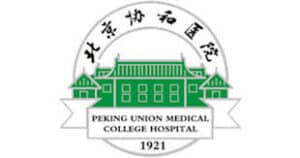
Peking Union Medical College Accreditations, Affiliations, Recognitions
Presenting a visionary style of hospital administration, PUMCH has been advocating the philosophy of “treating patients like family to increase satisfaction, and treating peers like family to create happiness.” This philosophy underpins its long-term ambition to construct an academic, high-quality, and humanistic PUMCH—a deserving “Century-old PUMCH.” For this purpose, the hospital has been shaping its “Six Systems”: Medical Services System, Talent Training System, Science and Innovation System, Fine Management System, Open & Collaboration System, and Party & Culture Building System.
Currently, PUMCH covers four campuses with a gross area of construction of 620,000 square meters. The hospital has more than 4,300 employees, among whom are three members of the Chinese Academy of Sciences and the Chinese Academy of Engineering. It has 59 clinical and medical technology departments, 29 national key clinical specialties, 6 national scientific research platforms, 5 “double first-class” disciplines, 12 national key disciplines, 9 doctoral degree authorization disciplines, 6 national continuing medical education centers, 21 national standardized residency training centers, and 8 national standardized specialist training centers. With more than 2,000 beds, PUMCH conducted over 73,000 surgeries and discharged over 130,000 patients in 2023 alone.
In addition to clinical service, PUMCH responds to its social mission through offering medical care and assistance to underdeveloped and inaccessible areas, handling emergencies, and taking part in significant national events. Under the motto of “all for the people and all for the patient,” the hospital is dedicated to providing world-class medicine with Chinese features and ensuring health at every stage of human life. As PUMCH enters its second century, it continues to focus on developing China’s healthcare system, enhancing medical innovation, and being an example of excellence in patient-centered care at the national level and beyond.
Advantages of Studying in Peking Union Medical College
Global Recognition:
PUMC degrees are recognized internationally, including by bodies like the Medical Council of India (MCI) and the World Health Organization (WHO).
High-Quality Education:
PUMC is consistently ranked among the top medical schools in China and globally.
Modern Infrastructure:
The university is equipped with advanced labs and facilities to support modern medical training.
Comprehensive Clinical Training:
Students gain extensive practical experience through internships at well-equipped hospitals.
Strong Research Focus:
PUMC is part of the Chinese Academy of Medical Sciences, fostering a strong research environment and opportunities for international collaborations.
International Cooperation:
PUMC actively promotes international scientific exchange and collaboration.
Affordable Education:
While specific costs can vary, China generally offers high-quality medical education at a more affordable price compared to Western countries.
Attractive Opportunities for Graduates:
PUMC graduates can potentially qualify to work in China or other countries due to the global recognition of their degrees.
Supportive Learning Environment:
PUMC is known for its dedicated faculty, well-stocked libraries, and friendly atmosphere.
Opportunities for Research:
PUMC provides access to its research facilities for international scientists and supports collaborations in medical science and technology.
Latest Notifications:
Peking Union Medical College – Ranking
The Peking Union Medical College (PUMC) Faculty of Clinical Medicine, with its core belief of being “small but cultivated”, has always followed an approach of small-scale admission, high-quality teaching, and the output of high-caliber graduates.
The academic framework is organized well, with preparatory and undergraduate education in clearly demarcated stages. At each stage, there is intense focus on establishing a strong foundation of knowledge, a sound academic framework, and enhanced clinical and professional skill in students.
One salient feature of the program is its individualized tutorial system. During the clinical training phase, every student is assigned to a qualified tutor who offers one-on-one mentoring, that the instruction is specifically adapted to the student’s personal strengths, learning style, and professional goals.
This strategy represents the ideal of instruction based on aptitude, encouraging both academic excellence and critical thinking, empathy, and professional accountability. The faculty also assigns significant emphasis to open-door instruction and global exchange programs, prompting learners to expand their horizon, interact with international medical innovations, and acquire cross-cultural abilities.
The goal of these programs is to make graduates as prepared as possible for leadership in the progressively interdependent healthcare world.
The eight-year clinical medicine program has been included in the total enrollment strategy of Tsinghua University since 2003, and admissions are organized jointly by PUMC and Tsinghua.
This partnership brings together Tsinghua’s unmatched capability in basic sciences and PUMC’s century-long experience in clinical medicine to forge a world-class medical education platform. The interplay between the two institutions is crafted to develop world-class physicians and medical researchers who will lead innovation and excellence in national and global healthcare systems.
Departments And Course Duration in Peking Union Medical College
MBBS (Clinical Medicine) Program – Overview
At Peking Union Medical College, the MBBS program is offered as part of an integrated eight-year medical education track in collaboration with Tsinghua University. This program is designed for highly motivated students aiming to become top-tier physicians and medical researchers. The curriculum follows an elite “small yet refined” model, ensuring limited enrollment, rigorous academic standards, and intensive clinical training.
The program uniquely integrates basic sciences, clinical medicine, and research training to produce graduates with a strong foundation in medical knowledge, excellent clinical skills, and a broad understanding of global healthcare practices.
Course Duration
- Total Duration: 6 years (Undergraduate + Clinical + Research Training)
- Degree Awarded: Bachelor of Medicine and Bachelor of Surgery (MBBS) / Equivalent to M.D. in the Chinese system
- Study Structure:
- Preparatory Stage (1 year) – Conducted at Tsinghua University, focusing on fundamental sciences, mathematics, and introductory biomedical courses.
- Preclinical Stage (2 years) – Basic medical sciences such as anatomy, histology, physiology, biochemistry, pathology, microbiology, pharmacology, and immunology.
- Clinical Stage (2 years) – Rotations across major clinical departments, bedside teaching, and skill development.
- Research & Elective Stage (1 year) – Includes a research project or specialization training, with opportunities for international exchange.
Departments And Disciplines
PUMC offers comprehensive training across 59 clinical and medical technology departments, supported by national key specialties and research centers. Major academic and clinical departments include.
Basic Medical Sciences
- Anatomy
- Histology & Embryology
- Physiology
- Biochemistry & Molecular Biology
- Pathology
- Microbiology & Immunology
- Pharmacology
Major Clinical Departments
- Internal Medicine (Cardiology, Pulmonology, Gastroenterology, Endocrinology, Nephrology, Hematology, Rheumatology, Infectious Diseases)
- Surgery (General Surgery, Cardiothoracic Surgery, Neurosurgery, Orthopedics, Plastic & Reconstructive Surgery)
- Obstetrics & Gynecology
- Pediatrics & Neonatology
- Ophthalmology
- Otorhinolaryngology (ENT)
- Dermatology & Venereology
- Neurology & Psychiatry
- Oncology
- Emergency Medicine
- Anesthesiology
- Intensive Care Medicine
Medical Technology And Specialized Departments
- Radiology & Imaging
- Nuclear Medicine
- Clinical Laboratory Medicine
- Pathology Diagnostics
- Rehabilitation Medicine
- Traditional Chinese Medicine Integration
Program Features
- One-on-One Clinical Mentorship – Each student is guided by a senior physician during clinical rotations.
- International Exchange – Opportunities for study and research abroad with partner institutions.
- Interdisciplinary Integration – Combining Tsinghua’s strengths in engineering, life sciences, and public health with PUMC’s clinical expertise.
- Research-Oriented Training – Encouraging publication, innovation, and scientific inquiry alongside medical studies.
Latest Updates:
Facilities And Infrastructure in Peking Union Medical College
Peking Union Medical College (PUMC) combines its century-old legacy with modern, world-class infrastructure to provide an exceptional environment for medical education, research, and healthcare services. Its facilities are designed to meet international standards while preserving the historical charm of one of China’s most prestigious medical institutions.
1. Campuses & Buildings
- Four Campuses with a total construction area of 620,000 square meters.
- Historic Main Building – A heritage site reflecting early 20th-century medical architecture.
- Modern Clinical Complexes – Equipped with state-of-the-art operating theaters, intensive care units, and specialized treatment centers.
- Dedicated Education Blocks – Classrooms, lecture halls, seminar rooms, and multimedia-enabled auditoriums.
2. Academic & Research Facilities
- National Key Laboratories – Supporting cutting-edge research in fields such as molecular medicine, oncology, and cardiovascular health.
- Clinical Skills Training Center – Simulation labs for patient care, surgery, emergency response, and procedural training.
- Medical Imaging Center – Housing advanced diagnostic equipment including MRI, CT, PET-CT, and ultrasound systems.
- Anatomy Dissection Halls – Fully equipped for detailed human anatomy study.
- Pathology & Histology Labs – With high-resolution microscopes and digital imaging systems.
- Computer & E-Learning Facilities – Access to medical databases, research journals, and virtual anatomy platforms.
3. Hospital Infrastructure
- 59 Clinical & Medical Technology Departments covering all major specialties.
- Over 2,000 Hospital Beds – Offering comprehensive inpatient and outpatient care.
- Specialty Centers – Including cardiovascular, oncology, women’s health, pediatrics, and emergency care.
- 24/7 Emergency Department – Equipped for trauma, critical care, and disaster response.
- National Residency & Specialist Training Centers – 21 standardized residency training centers and 8 specialist training centers.
4. Library & Knowledge Resources
- PUMC Library – One of the most comprehensive medical libraries in China, holding historical archives, rare medical manuscripts, and extensive electronic resources.
- Access to International Databases – Including PubMed, Web of Science, and specialized medical research platforms.
- Digital Library Services – E-books, video lectures, and online learning modules.
5. Student Facilities & Accommodation
- On-Campus Hostels – Safe, furnished accommodations with internet access, study rooms, and laundry facilities.
- Student Activity Centers – For cultural events, seminars, and club activities.
- Canteens & Dining Halls – Offering both Chinese and international cuisines, with nutrition-focused meal plans for students.
- Sports & Fitness Facilities – Gymnasiums, basketball courts, table tennis, and outdoor sports fields.
6. Technology & Innovation
- Advanced Telemedicine Systems – For remote consultations and collaborative diagnosis.
- Smart Campus Integration – Digital student management, e-classrooms, and online academic tracking.
- Research Innovation Hubs – Fostering collaboration between clinicians, researchers, and biomedical engineers.
7. International Collaboration Facilities
- Exchange Student Support Office – Dedicated space for managing global partnerships and visiting scholars.
- International Conference Halls – Hosting symposiums, workshops, and collaborative research meetings.
Official site For Peking Union Medical College: Click Here
Required Documents For Admission in Peking Union Medical College
- Application Form
- Passport size photographs
- Certificates of class 11 and 12 from the respective board of education
- School leaving certificate
- Scanned copy of a valid passport including image
- Certificates of extracurricular activities if any
- All the documents should be attested and notarized from the relevant authorities
Eligibility Criteria For Admission in Peking Union Medical College
- Age: The student should be at least 17 years old
- Academic Qualification: Students must have completed their secondary education or equivalent from a recognized board with Physics, Chemistry, and Biology as mandatory subjects.
- Language Proficiency: International students must be proficient in the Chinese language as it is the language of instruction for the MBBS program.
- Entrance Exam: Students must clear the entrance exam conducted by the respective university.
- Health Checkup: International students must pass a medical examination to ensure they are fit to pursue MBBS studies
Admission Process For Peking Union Medical College
- Online Application: Fill out the application form and submit the required documents online.
- Fee Payment: Once the university reviews and approves the application, pay the required fees.
- Immigration Process: The university initiates the immigration process and issues an invitation letter after receiving the ministry order.
- Visa Approval: The visa approval process takes around 30 days.
- Travel to China: After receiving the student visa, students can finalize their travel plans and prepare for departure.
Get more details about the colleges in China: Click Here
Benefits of Studying at Peking Union Medical College
Peking Union Medical College is recognized as one of China’s most prestigious and historically significant medical institutions. It offers students a unique combination of academic excellence, clinical exposure, and global opportunities that few medical schools in Asia can match.
1. Prestigious Legacy & Reputation
- Founded in 1921 by the Rockefeller Foundation, PUMC has over a century of excellence in medical education, research, and patient care.
- Known as the “best medical center in Asia” in its early years, it remains a benchmark for medical quality in China.
- Alumni include many of China’s leading medical pioneers and scholars.
2. Elite Education Model
- Small-Scale Enrollment ensures a favorable student-to-faculty ratio and highly personalized attention.
- Rigorous Academic Standards with the “Three Basics” (theory, knowledge, skills) and “Three Stricts” (requirements, training, evaluation).
- One-on-one tutorial mentorship system during clinical training for tailored guidance.
3. Strong Collaboration with Tsinghua University
- Joint admissions for the 8-year Clinical Medicine program, integrating Tsinghua’s strengths in basic sciences with PUMC’s clinical expertise.
- Access to Tsinghua’s interdisciplinary resources in engineering, biotechnology, and public health.
4. World-Class Clinical Training
- Training in PUMC Hospital, one of China’s top-ranked teaching hospitals.
- Exposure to complex, rare, and high-level clinical cases due to the hospital’s national referral status.
- Extensive clinical rotations across 59 clinical and medical technology departments.
5. Research & Innovation Opportunities
- Access to 6 national scientific research platforms and 12 national key disciplines.
- Opportunities to participate in pioneering research projects and publish in high-impact journals.
- Support for innovation and technology transfer in medical sciences.
6. International Exposure
- Active participation in exchange programs with top global medical schools.
- Opportunities to attend international conferences, workshops, and collaborative research projects.
- English-language resources and access to global medical literature through the PUMC Library.
7. Comprehensive Student Support
- Well-equipped on-campus accommodation, canteens, and recreational facilities.
- Student counseling, academic advising, and career guidance services.
- A vibrant student community with medical clubs, cultural activities, and volunteer opportunities.
8. High Graduate Success Rate
- PUMC graduates are highly sought after in hospitals, research institutes, and academia both in China and abroad.
- Many alumni hold leadership positions in healthcare policy, hospital management, and medical innovation.
Privileges And Benefits for Indian Students in Peking Union Medical College
Studying at Peking Union Medical College, one of Asia’s most prestigious medical institutions, offers Indian students not just academic excellence but also a supportive environment for adapting to a new cultural and academic setting.
1. Globally Recognized Degree
- Internationally respected MBBS/MD degree, recognized by the World Directory of Medical Schools (WDOMS) and eligible for FMGE/NExT in India after graduation.
- Education quality and training standards align with global medical norms.
2. World-Class Clinical Exposure
- Clinical training in PUMC Hospital, a top-tier national referral and teaching hospital.
- Exposure to diverse and complex medical cases, which strengthens diagnostic and treatment skills.
- Hands-on experience in advanced medical technologies and procedures.
3. English-Supported Learning Resources
- While the primary medium is Chinese, English medical textbooks, research materials, and library resources are available for ease of study.
- Opportunities to improve medical Chinese for effective patient communication.
4. Small Class Size & Personalized Guidance
- A low student-to-faculty ratio ensures more interaction with professors.
- One-on-one mentorship during clinical years for personalized skill development.
5. Research & Academic Opportunities
- Access to national research platforms and opportunities to publish in international journals.
- Collaboration possibilities with Tsinghua University in biomedical research and interdisciplinary projects.
6. Affordable and Quality Education
- Lower tuition and living expenses compared to Western countries, while maintaining world-class facilities.
- Access to scholarship opportunities for outstanding international students.
7. Safe & Comfortable Living
- On-campus hostels with modern amenities, 24/7 security, and proximity to classes and hospitals.
- Access to multiple canteens offering Indian-friendly vegetarian and non-vegetarian meals.
8. Cultural & Community Support
- Welcome environment for Indian students with cultural exchange programs.
- Possibility to connect with other Indian students in Beijing for peer support.
- Exposure to Chinese language and culture, enhancing communication skills and global adaptability.
9. Strong Career Prospects
- Graduates can pursue medical practice in India after clearing FMGE/NExT or opt for licensing exams like USMLE (USA), PLAB (UK), or others.
- Alumni network spread across top hospitals and research institutions worldwide.
FAQ’s
What is the medium of instruction?
The main medium is Chinese, especially for patient interaction in clinical years. However, many textbooks, reference materials, and research resources are in English. Students are trained in medical Chinese during the initial years.
Is the MBBS degree from PUMC recognized in India?
Yes. PUMC is listed in the World Directory of Medical Schools (WDOMS). Indian graduates are eligible to appear for FMGE/NExT to practice in India, subject to NMC regulations.
How are admissions conducted for international students?
International students must meet academic and language requirements, submit application documents online, and pass an entrance assessment or interview. Seats are limited due to small-scale enrollment.
What clinical training opportunities does PUMC offer?
Students train at PUMC Hospital, one of China’s top-ranked teaching hospitals, with exposure to rare and complex medical cases from across the country.
Does PUMC have collaborations with international institutions?
Yes. PUMC maintains partnerships with leading medical schools and hospitals worldwide, offering opportunities for exchange programs, joint research, and academic conferences.
Also Check:
